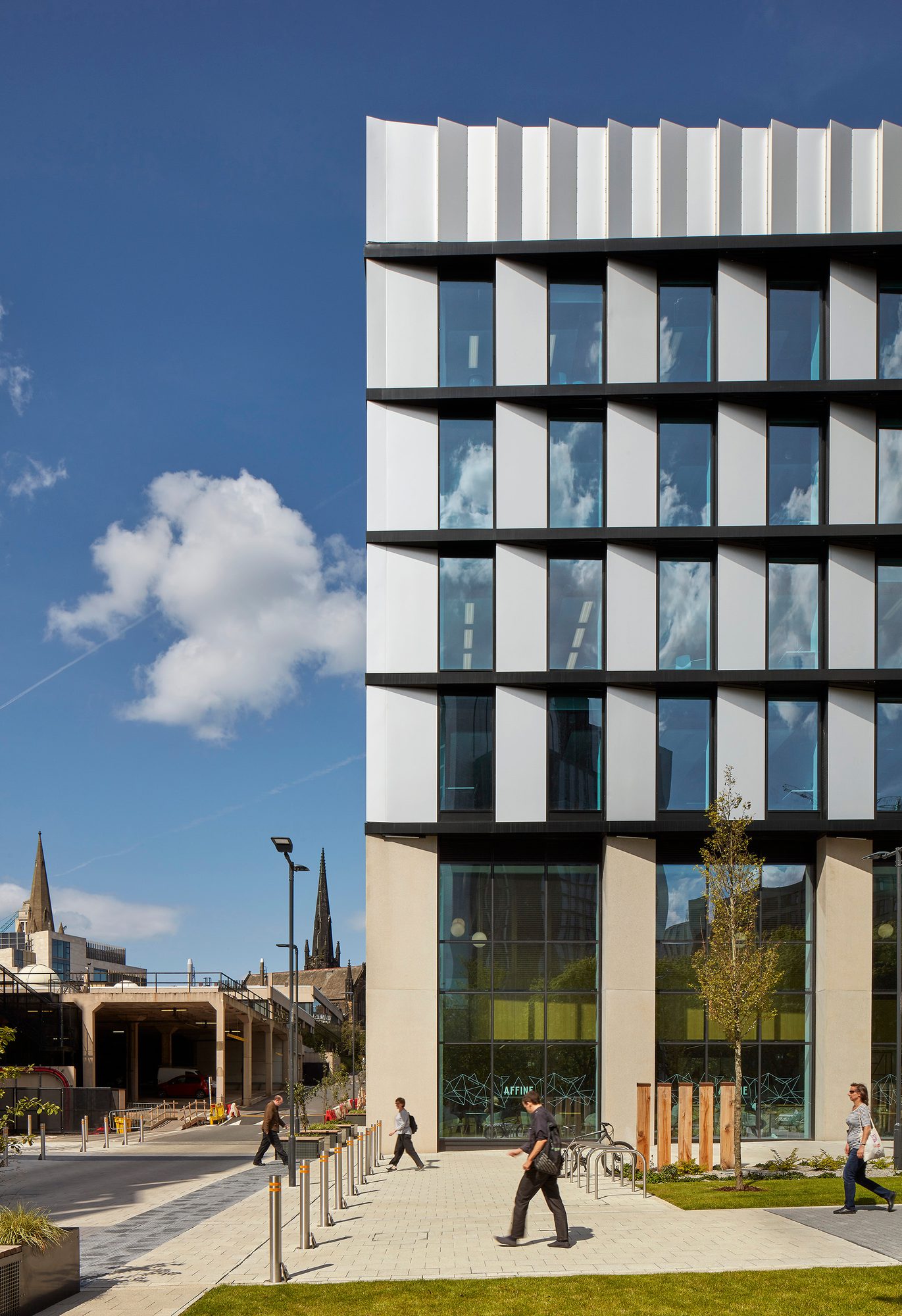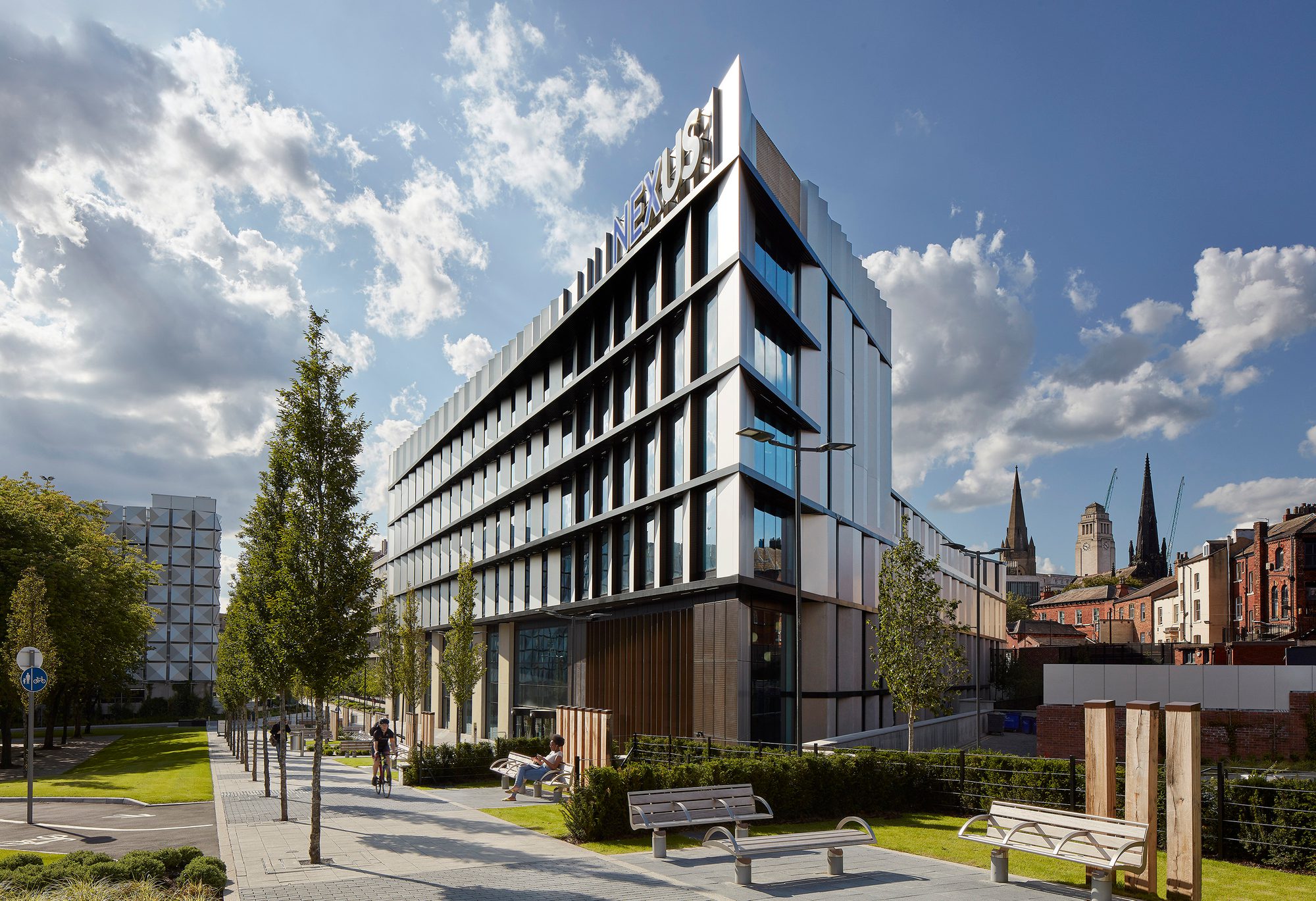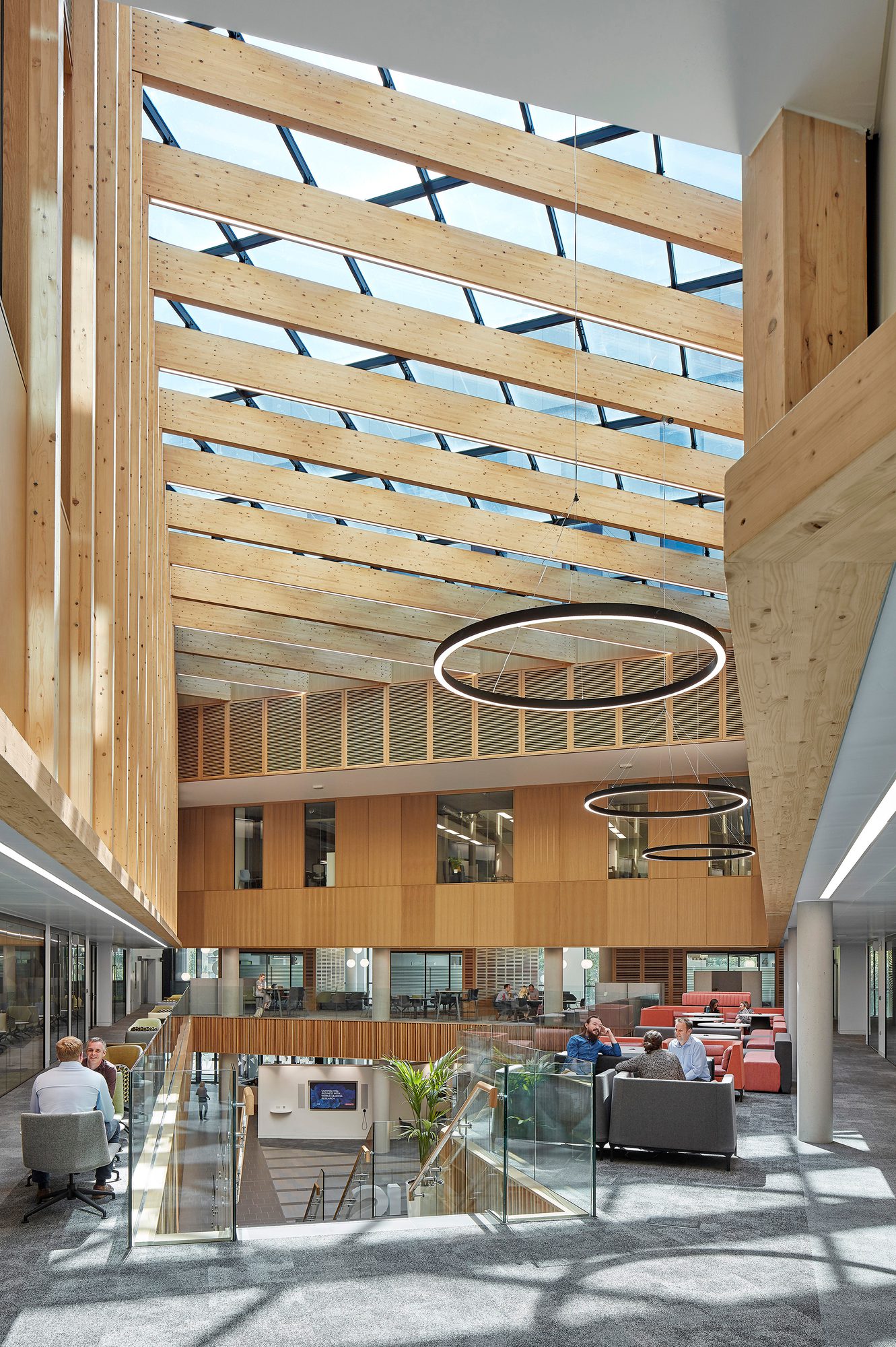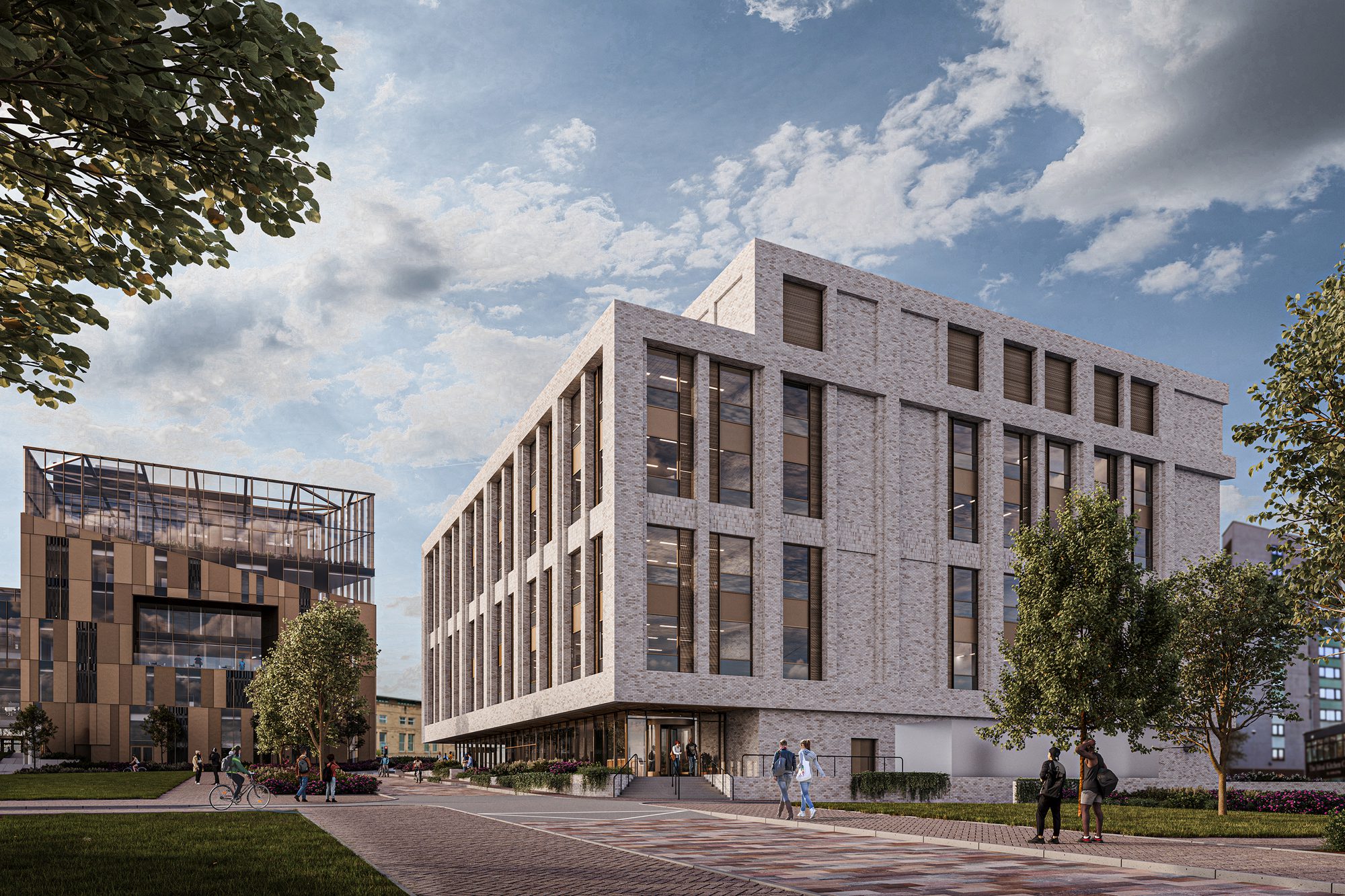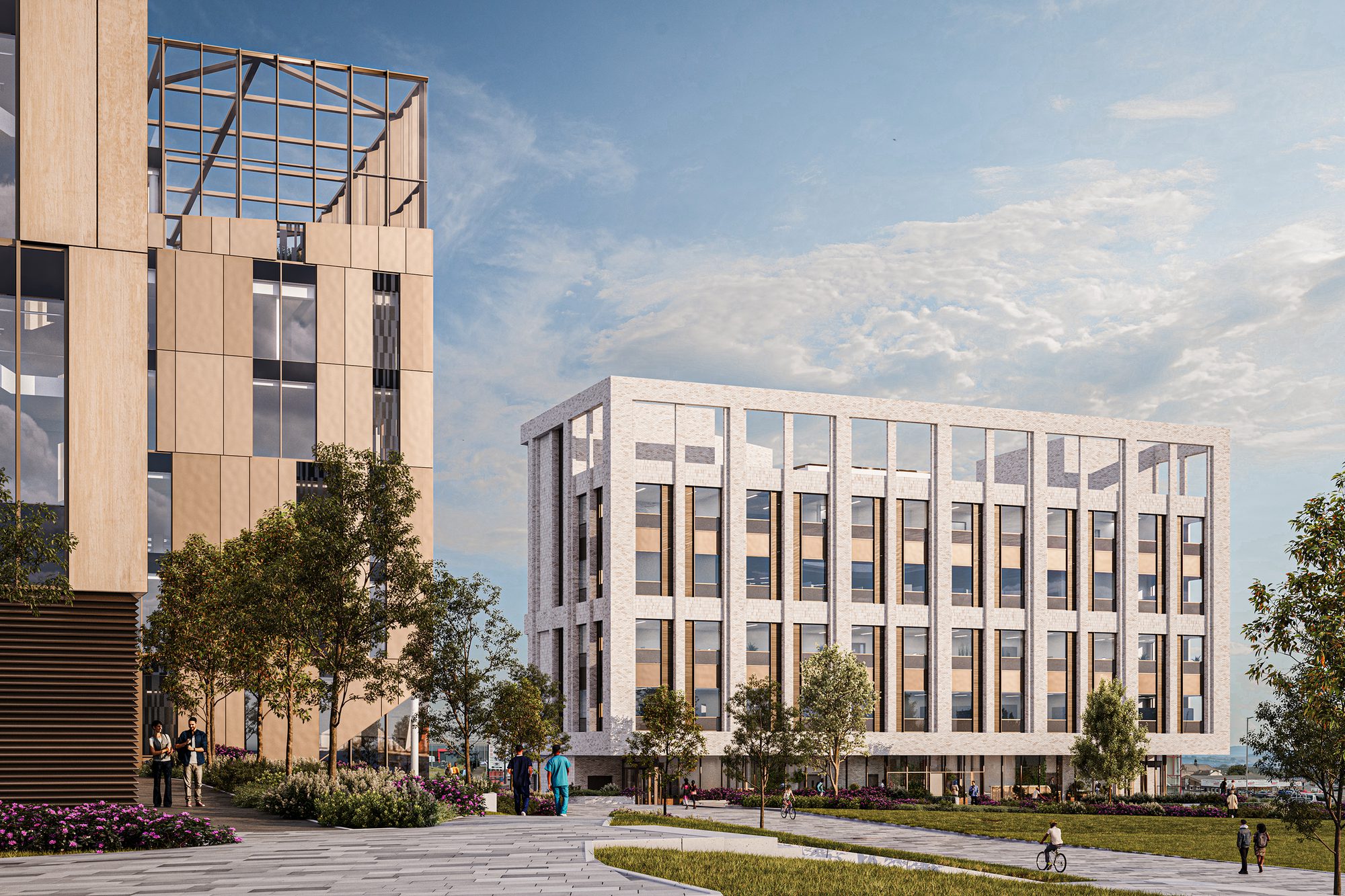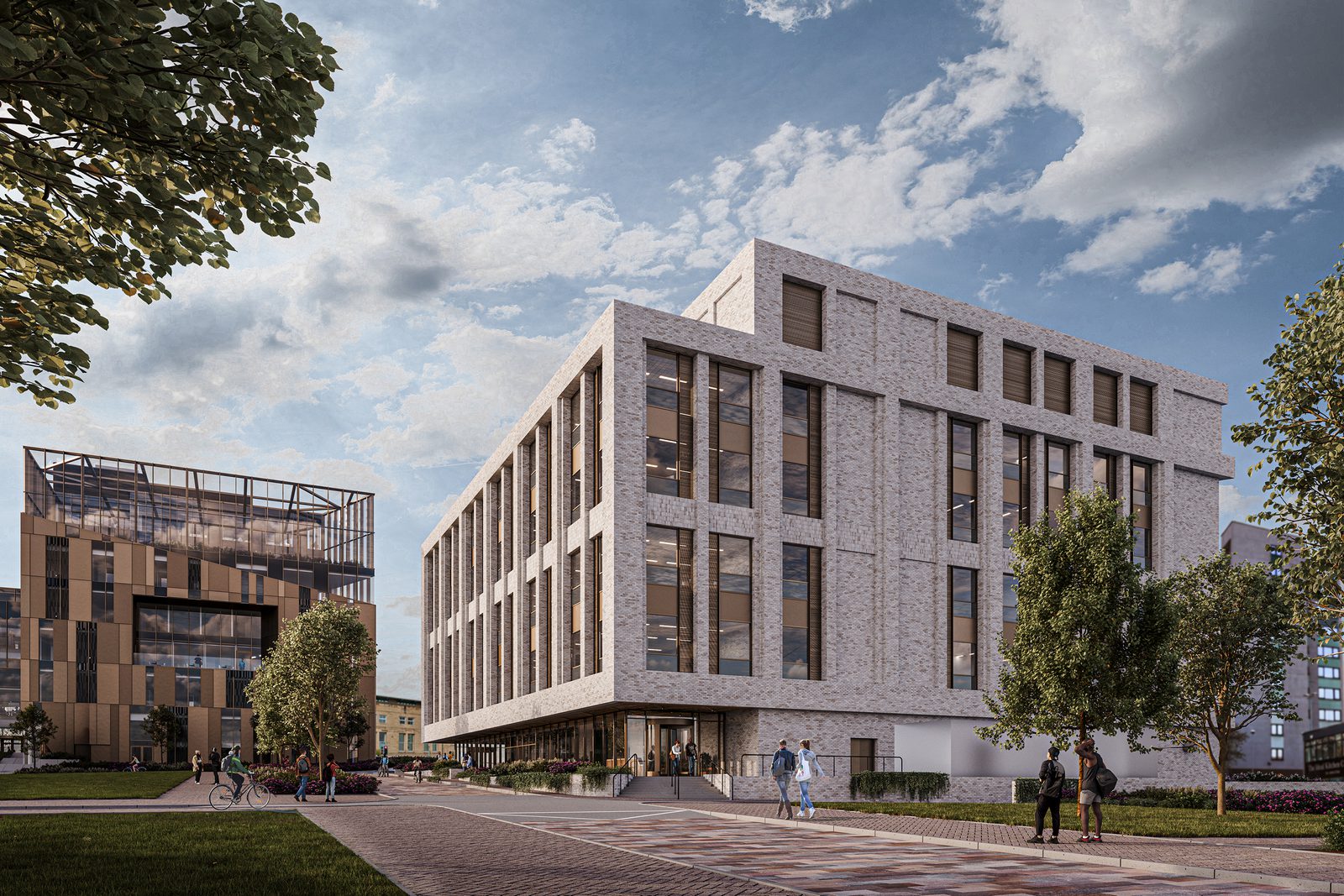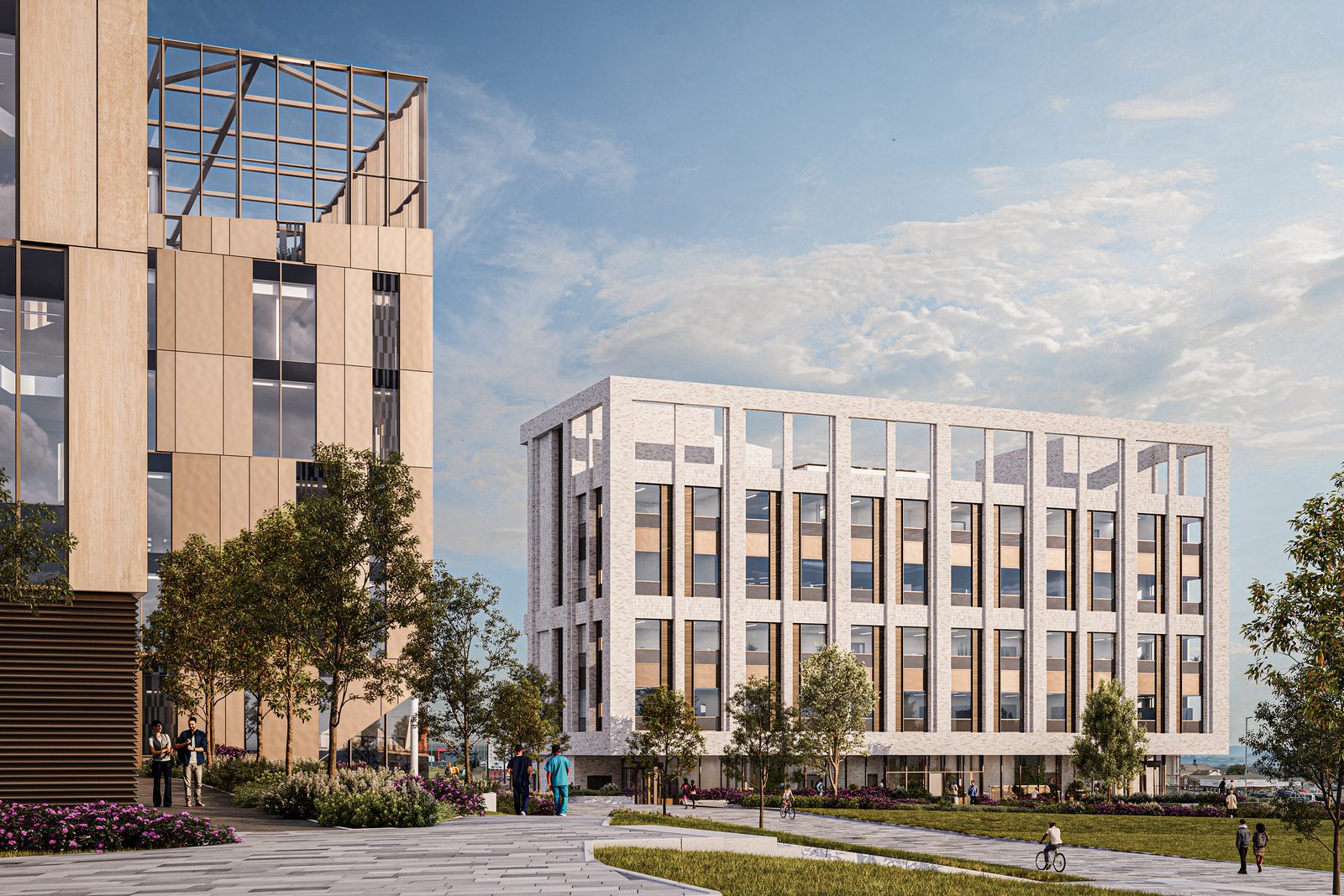
Thought Leadership
Cross-sector ecosystems: Designing places for health innovation
by AHR
Innovation thrives in the right conditions. It relies on strong networks and places that bring people together to share ideas and work collaboratively.
The UK’s health and life sciences sectors are central to its ambition to become a global leader in research and innovation. With sustained investment in medtech, digital health and applied research, there is growing demand for health innovation hubs places that can bring people and ideas together. Places that support cross-sector ecosystems and enable innovation to grow.
The integration of medtech, digital health, biologics and automation is creating a need for new kinds of environments. Spaces that enable research to translate into commercial opportunity, and innovation to reach patients and healthcare providers more quickly. Spaces that bring together clinicians, scientists, educators and entrepreneurs in settings designed to support shared progress.
As the UK Government’s industrial strategy1 sets out ambitions for strengthening regional economies and supporting innovation-led growth, cross-sector innovation hubs have a growing role to play. When supported by the right physical infrastructure, these environments help nurture early-stage research, encourage partnerships and provide space for ideas to develop and scale.
 Supporting cross-sector working and innovation to grow
Supporting cross-sector working and innovation to growPlace-based innovation ecosystems in health and life sciences
One of the central principles of the UK’s strategy is the recognition that innovation does not happen in isolation. It depends on strong ecosystems. These ecosystems rely on physical proximity, shared infrastructure and the right spatial conditions to support collaboration and productivity.
This is reflected in the UKRI Strategy 2022 to 2027, which calls for investment in “world-class places” that strengthen innovation capacity across the UK2. It emphasises the role of local leadership, strong partnerships between institutions, and the need for well-designed places that support research, enterprise and wider community benefit.
Innovation hubs are especially relevant in the health sector, where developments in diagnostics, therapeutics and healthtech often rely on partnerships between clinicians, academics and entrepreneurs. These hubs help reduce duplication, improve pathways for commercialisation, and allow innovation to be tested, refined and scaled more effectively.
Flexible research environments for health innovation
Supporting this kind of collaboration takes more than proximity. It’s about designing spaces that can respond to different ways of working, support collaboration and continue to work well as needs change.
Research spaces, teaching areas, co-working zones and communal facilities all play a role. Shared laboratories and flexible workspace support a range of activities and user types, from start-ups and spin-outs to established companies. Well-designed informal spaces also help foster everyday interactions that can lead to new ideas and working relationships.
Context matters too. Health innovation hubs are more effective when they are well connected to public transport, to surrounding communities, and to institutions such as hospitals and universities. Accessible, sustainable design not only supports the day-to-day needs of users but also helps attract and retain the talent that drives innovation forward.
Designing health innovation hubs that enable ecosystems
For organisations involved in delivering healthcare, conducting research or scaling new technologies, the right environment can make a significant difference. Thoughtful life sciences and healthcare design can reduce barriers to entry, enable faster development cycles and support more effective collaboration between sectors.
Regeneration for health innovation: Leeds Old Medical School
In Leeds, an adaptive resuse project is underway that illustrates many of these principles. The University of Leeds and Scarborough Group International are working in partnership to transform the historic Old Medical School into a new centre for health and innovation. We have been appointed to lead the design, which will reimagine the Grade II listed building as a collaborative space for research, innovation, and the commercialisation of ideas.
Find out more about the Leeds Old Medical School project
While the design is still in development, we have a clear ambition. The project seeks to bring together the university, the NHS and a broad mix of public and private sector partners in a setting that reflects both the heritage of the building while supporting the future of health-related innovation in the city.
Located within the emerging Leeds Innovation Arc, the Old Medical School has the potential to support activity across multiple disciplines, including digital health, medical technologies and applied research.
Laboratories, flexible workspaces and shared facilities will support a broad mix of users, from academic researchers to healthcare professionals and health-focused businesses at every stage of growth. The project also reflects a wider shift towards regeneration and reuse, adapting existing assets to meet future needs in more sustainable ways.
Flexible research environments: Nexus, University of Leeds
Also in Leeds, the Nexus building at the University of Leeds provides another example of how dedicated, flexible environments can bring together academia, enterprise and innovation. Designed to connect businesses with the university’s research expertise, Nexus offers a mix of office, laboratory, seminar and lecture spaces.
As part of the Leeds Innovation Arc, it plays an important role in strengthening the city’s innovation ecosystem. It creates a space where researchers, entrepreneurs and businesses can collaborate, access expertise and accelerate their ideas. Its success demonstrates the value of environments that are intentionally designed to foster partnerships and drive commercialisation within a university-led setting.
Read our project case study on the University of Leeds’ Nexus building
Designing for health innovation: The Emily Siddon Building, University of Huddersfield
In Huddersfield, the Emily Siddon Building offers another example of how the built environment can support innovation in health.
Delivered as part of the University of Huddersfield’s National Health Innovation Campus, the building will bring together multiple sectors in one purpose-designed space.
Alongside academic and clinical teaching spaces, the building will also provide dedicated support for enterprise and innovation. The fourth floor will house the Innovation Centre, offering flexible offices and laboratories for health-related companies.
By co-locating activity that has traditionally been spread across multiple sites, the building helps strengthen links between learning and application, enabling new ideas and practices to develop more effectively.
Read our project case study on the Emily Siddon Building at the University of Huddersfield
Supporting regional growth and skills
Health innovation hubs are also important for regional development. By concentrating high-value activity in accessible, well-connected locations, they can help attract investment, support skills development and generate new opportunities for local people.
In Leeds, the Old Medical School project is part of a wider commitment to the Leeds Innovation Arc, an initiative to establish an innovation district that connects the city’s academic, health and business networks.
A similar vision is taking shape in Huddersfield through the National Health Innovation Campus, which is building partnerships between education, research and business to support progress in health and wellbeing. Together, these developments show how place-based investment can unlock broader social and economic value.
This reflects broader national goals around levelling up, inward investment and inclusive growth. It also highlights the role of universities, NHS trusts and local authorities in shaping the future of innovation, not in isolation, but in partnership with each other and with industry.
Looking ahead
As the UK continues to invest in health research, education and innovation, the role of place will only grow in importance. From city-centre regeneration projects to new campuses on the edge of town, there is increasing demand for environments that support cross-sector collaboration and long-term impact.
Designing these places is about more than delivering buildings. It is about creating the conditions for innovation to take root, connecting people, disciplines and ideas in ways that reflect the complexity and ambition of the health sector itself.
Through projects like the Old Medical School and the Emily Siddon Building, we are working alongside our partners to shape environments that are open, flexible and ready to support the future of health innovation.
Talk to us if you’re exploring how the built environment can help enable health-led innovation, we’d be happy to share our thinking and experience. Read more on our work with universities and within the healthcare sector.
Frequently asked questions
Health innovation districts are place-based ecosystems where universities, healthcare providers, researchers and businesses cluster together to accelerate collaboration and commercialisation.
Cross-sector ecosystems bring together clinicians, academics, entrepreneurs and industry partners. This reduces duplication, strengthens research pathways and speeds up the translation of innovation into patient care.
Designing for health innovation requires adaptable spaces such as laboratories, co-working areas, teaching facilities and informal hubs that foster collaboration and respond to evolving needs.
Regeneration projects like Leeds Old Medical School show how historic assets can be reimagined as modern, flexible spaces that support healthcare, research and enterprise within a district.
Universities provide research expertise, talent pipelines and physical infrastructure, anchoring health innovation districts and enabling collaboration with NHS and industry partners.
Examples include the Leeds Innovation Arc, with projects such as the Old Medical School and Nexus, and the University of Huddersfield’s National Health Innovation Campus.
By concentrating research, enterprise and healthcare activity, districts attract investment, create jobs, strengthen skills pipelines and generate wider social and economic value for local communities.
Posted on:
Aug 13th 2025
Topics:
Share on
Related Articles

Thought Leadership
How trauma-informed design is shaping more inclusive spaces
In this piece, we explore what trauma-informed design means in practice and how it is shaping a more inclusive future for the built environment.
Date: 25 Jul 25
by AHR

Practice News
Achieving decarbonisation: Circularity and smarter energy use in the built environment
As the built environment navigates a rapidly evolving climate landscape, the drive to decarbonise is becoming both more urgent and more complex.
Date: 22 Jul 25
by AHR

Thought Leadership
Optimising university estates to enhance the student experience
As competition among universities intensifies, the role of the campus estate in shaping student experience has never been more important.
Date: 15 Jul 25
by AHR

Thought Leadership
People first: Designing for community and identity
We explore the social dimension of placemaking and how inclusive design, meaningful engagement and cultural identity contribute to environments that are enriching and enduring.
Date: 7 Jul 25




